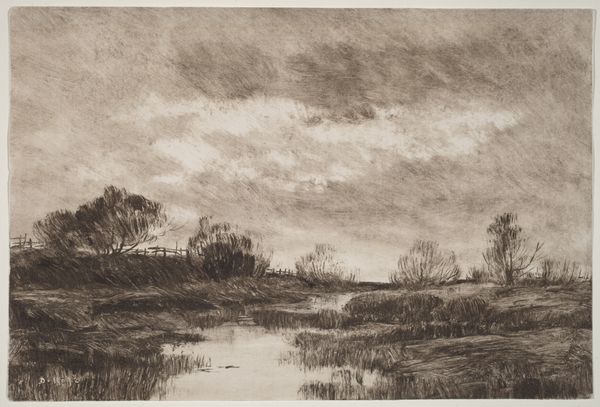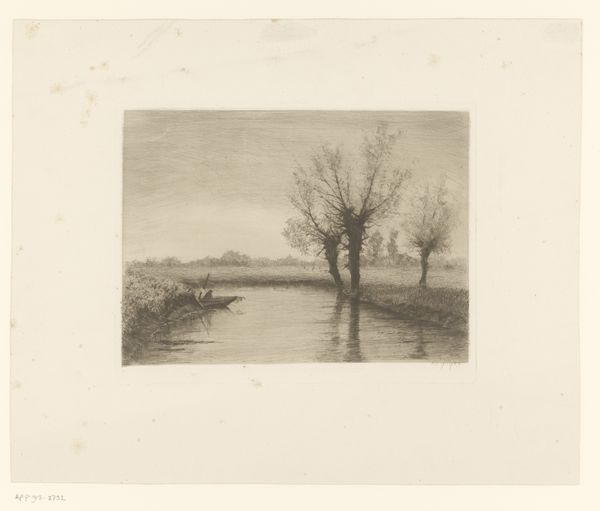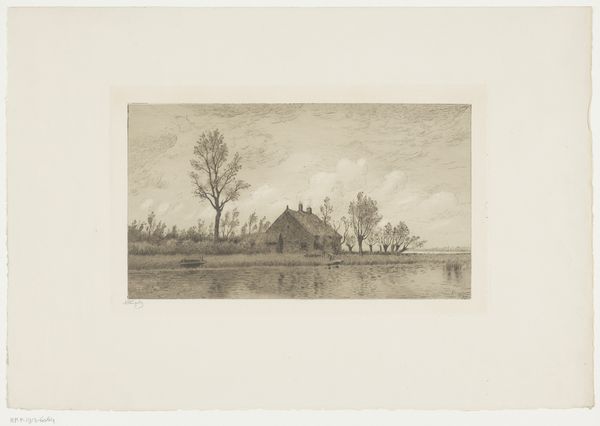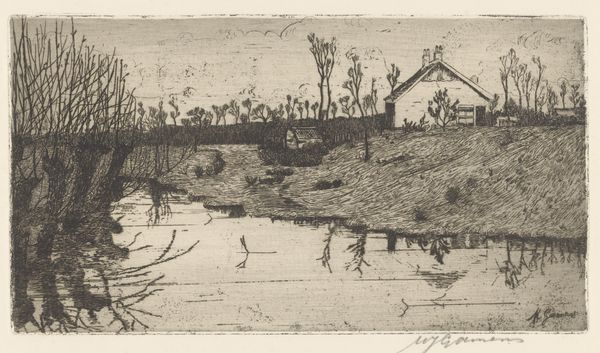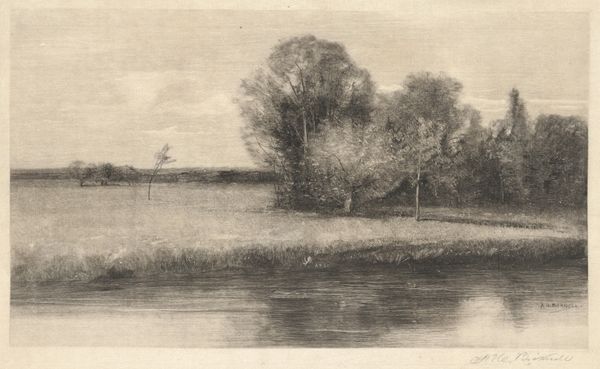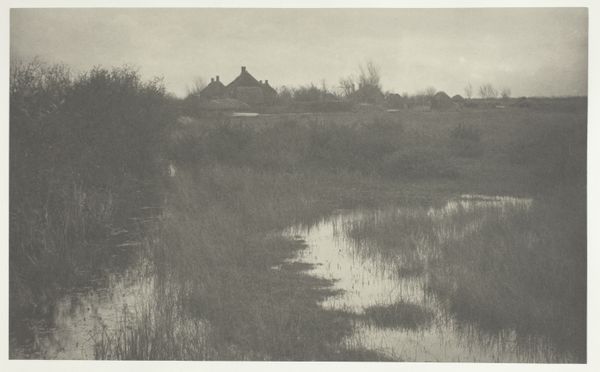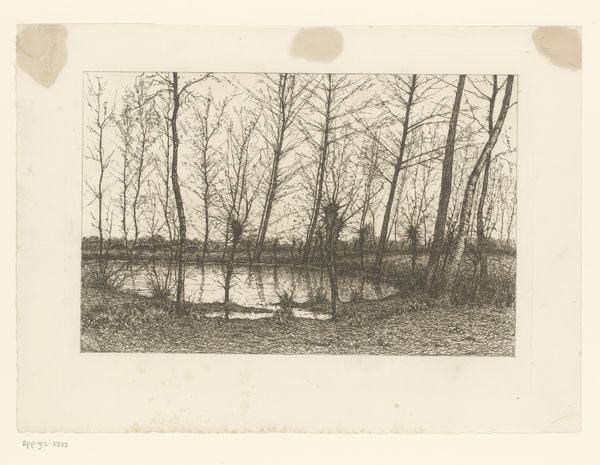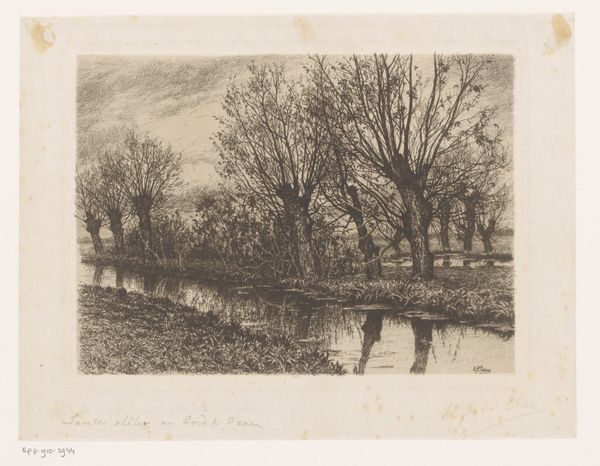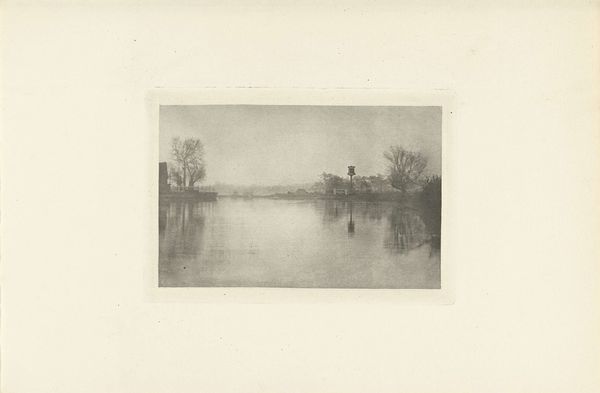
photogravure, print, etching, photography
#
photogravure
# print
#
impressionism
#
etching
#
landscape
#
photography
#
monochrome
Dimensions: 4 5/8 x 8 in. (11.75 x 20.32 cm) (image)11 1/16 x 14 15/16 in. (28.1 x 37.94 cm) (mount)
Copyright: Public Domain
Editor: This photogravure print, "A Tidal River" by J.B.B. Wellington, dates back to 1890. The hazy, monochrome palette and reflective river give it a somewhat melancholic mood. What can you tell me about it? Curator: Looking at this image, I'm drawn to consider the materiality of photography at this time. The photogravure process itself, involving etching and printing, elevated photography towards art objects for bourgeois consumption. Wellington and other pictorialists actively sought to make photography into hand-crafted luxury goods, blurring boundaries. Editor: So, the *process* of making it was as important, maybe even more so, than what was being depicted? Curator: Absolutely. Think about the labor involved: the photographer's eye, the technician's hand, the chemistry involved in producing the print. The very choice of subject—a pastoral scene—speaks to an audience with particular romantic ideals. What does this seemingly simple scene reveal about class and consumption? Editor: That’s a fascinating point. I was so focused on the landscape itself that I didn't think about who would want to *own* it, or how it challenges our understanding of 'art' versus mass-produced imagery. Curator: Exactly! This "landscape" is a commodity produced through a specific process and for a specific audience, transforming rural labour into aesthetics and decoration. Editor: I see that now, it gives a different perspective to consider the means of production. Thanks for your help. Curator: It's a reminder that even seemingly "natural" images are deeply embedded in social and economic structures, all visible through its materiality and processes.
Comments
No comments
Be the first to comment and join the conversation on the ultimate creative platform.

